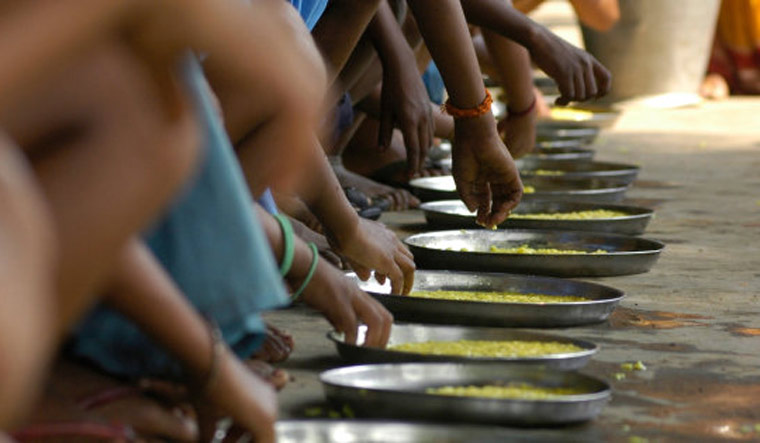Tribal households in Madhya Pradesh and Chhattisgarh face the dual challenge of low income and severe food insecurity – a situation alleviated only by the government schemes of subsidised food and public infrastructure, a status report by NGO PRADAN has shown.
The Status of Adivasi Livelihoods (SAL) 2022 report for Madhya Pradesh and Chhattisgarh quotes the National Sample Survey (NSS) data to mention that tribal households in Madhya Pradesh have an average annual income of Rs 73,900 and in Chhattisgarh at Rs. 53,610, which is much less than the national average annual income of Rs 122,610 per agricultural household during the agricultural year 2018-19.
Also, 32 per cent of tribal households, 27 per cent of non-tribal households, and 61 per cent of particularly vulnerable tribal groups (PVTG) households in Madhya Pradesh were severely food insecure. In Chhattisgarh, 27 per cent of tribal, 42 per cent non-tribal, and 29 per cent of PVTG households reported being severely food insecure.
Similarly, the average landholding of tribal and PVTG households in Madhya Pradesh is 3.9 and 4.4 acres respectively. For Chhattisgarh, the figures are 3.2 and 3 acres respectively, the report released online on Friday shows.
The report, however, reveals that the government interventions have helped the Adivasi communities lead a better life, despite earning lower income. In Madhya Pradesh, 51 per cent of tribal, 63 per cent non-tribal, and 50 per cent of PVTG villages have public distribution system (PDS) outlets providing government subsidised food. In Chhattisgarh, the figures are 63 per cent, 88 per cent, and 36 per cent respectively.
The food subsidy through PDS also has reduced the stress the households would have faced due to lower income. In Chhattisgarh, the food and other items consumed by an average tribal household in a year from PDS have a market price of almost Rs 18,000, but only around 13 per cent of this amount is spent to procure those goods. The rest 87 per cent of the amount, the subsidy given by the government, contributes significantly to reducing the income stress of the households.
In Madhya Pradesh, too, the tribal households in a year procures goods from PDS worth Rs 10,000 market price, spending only 22 per cent of the amount to procure them, rest being taken care by the government subsidy.
In terms of road connectivity, 78 per cent tribal, 79 per cent non-tribal, and 80 per cent PVTG villages are linked to block headquarters by all-weather roads in Madhya Pradesh. In Chhattisgarh, the corresponding figures are 80 per cent, 100 per cent, and 82 per cent. About 42 per cent of tribal, 63 per cent non-tribals, and 80 per cent of PVTG villages in Madhya Pradesh are linked to block headquarters by public transport. For Chhattisgarh, the figures are 30 per cent, 40 per cent, and 9 per cent respectively.
The SAL Report 2022 is based on a household survey covering a sample of 6,019 households; out of these, 4,745 are tribal, 393 are PVTG, and the rest 881 were non-tribal households from the same region. Along with this, 50 Focus Group Discussions of different sections of villagers and 28 interviews of persons closely associated with and knowledgeable about the tribal issues were also conducted.
The aim of the SAL report is to present the current status of tribal livelihoods. It is not intended to offer any recommendations for improving the situation of tribal or PVTGs, a statement by PRADAN said.
PRADAN comes up with a periodic report covering different states of central India in a phased manner to understand the status of livelihoods of the Scheduled Tribe people from the central Indian belt. The Status of Adivasi Livelihoods Report 2021 (SAL Report 2021) covered the states of Jharkhand and Odisha, while the latest report covers Madhya Pradesh and Chhattisgarh.
The online release event of the report was attended by Virginius Xaxa, eminent academician and Gunjal Ikir Munda, Assistant Professor, Central University of Jharkhand.



